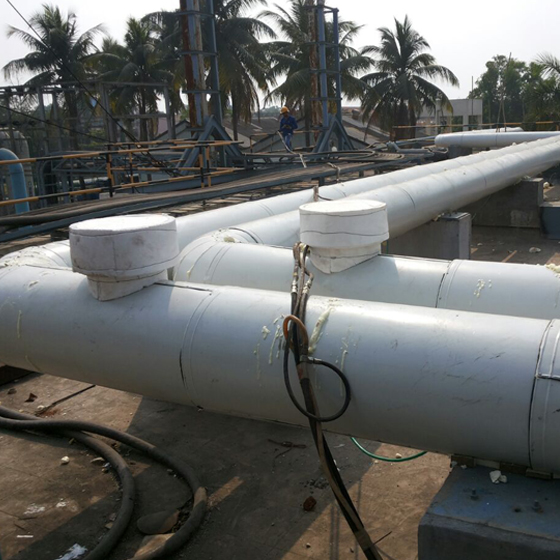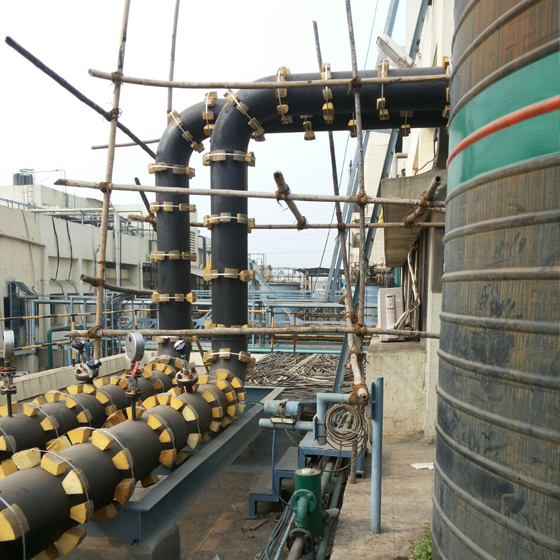





The insulation of pipeline is done to preserve the temperature inside the line. The insulated pipes can be vertical or horizontal stretched all over the plant carrying various liquids.
For void free insulation and to avoid sweating over the surfaces proper insulation is required. Proper temperature can be maintained with minimum heat loss through proper insulation.
Insulation properties of Polyurethane Foam are much better than other insulating material hence it is preferred over other insulating materials.
Cladding can be done over the pipeline using various surfaces such as
All cladding joints will be overlapped and arranged to shed water and expansions and contractions before being sealed with water proof sealant. Generally metal cladding is done on pipelines for durability of the insulation and general aesthetics.
Where valves, flanges or other fittings are to be left exposed for operational reasons, the insulation will be butted up to these fittings and finished with preformed aluminum end caps fabricated onsite to suit the pipe diameter and insulation thickness.
Thickness of insulation varies as per the ambient temperature and the internal temperature of the pipeline to be maintained. The curves and the bends all over the pipeline can be filled together such that no voids are left.
The density of Polyurethane foam insulation is maintained around 40kg/m3.
Higher densities are also achieved as per the requirement of the customer.
PIR can also be used as an insulating material.
Advantages with In-situ foaming in Pipe lines: